“Gugak in (人)” is a project initiated by the National Gugak Center in 2020 to produce music videos of traditional Korean performing arts. Released online, the videos present a new way of appreciating traditional performances.
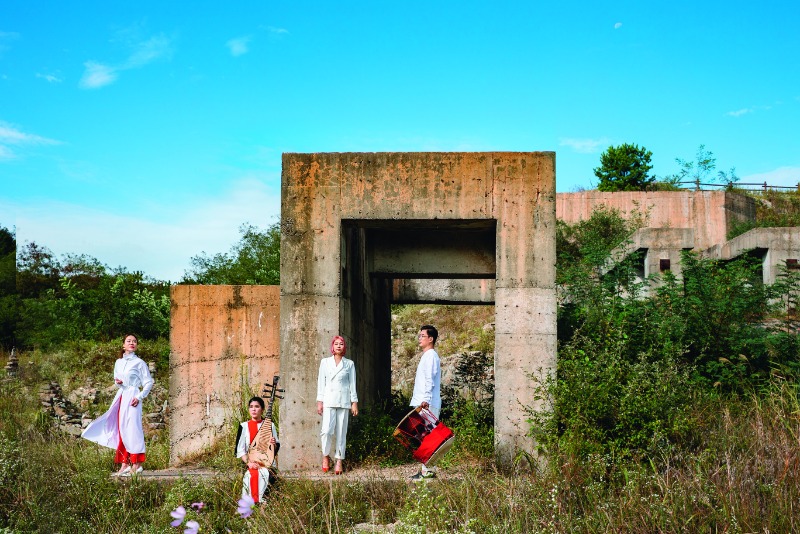
In October 2021, AKDANG’s “Nanbong” performance was livestreamed as part of the Gugak in project. It reinterprets the folk song “Nanbongga,” expressing longings for someone you can’t meet because of COVID-19.
Courtesy of National Gugak Center
The National Gugak Center was founded in 1951 to preserve and promote the legacy of traditional Korean performing arts. In August 2020, the Center started a project called Gugak in (人) to support traditional Korean performing artists by producing videos of their music and dance. The aim of the project was to help artists stage online performances, as their activities had been severely limited during the first year of the COVID-19 pandemic, causing economic and psychological hardship.
That year, the National Gugak Center selected 20 acts through a public contest and produced 20 music videos, releasing one each week on YouTube and Naver TV, operated by Korea’s largest web portal. Viewers discovered a new side of traditional Korean music, which continues to change in line with contemporary trends. Moreover, the settings that so beautifully complement the performances have raised curiosity about the filming locations. Above all, the project has given gugak performers the opportunity to record and introduce their music and artistry in a special way at home and abroad. As a result, in May this year, the group SaaWee’s “New Ritual” performance won in the Best World Music category at the 5th California Music Video Awards, hosted by US media company TasteTV.
Due to the great public interest, the Gugak in (人) project continued in 2021 and 2022. To date, some 50 music videos have been produced, featuring groups selected every year through the National Gugak Center’s contest. They showcase the current state of traditional Korean performance art to audiences around the world.
“TAL” (2020) by Dal:um(2020)
Dal:um is a duo formed in 2018 by two instrumentalists, Ha Su-yeon on the gayageum (12-stringed zither) and Hwang Hye-yeong on the geomungo (6-stringed zither). Although the two instruments look similar, they are very different in structure, playing method and tone. Whereas the strings on the gayageum are plucked with the fingers, the geomungo strings are both plucked and struck with a stick called suldae, in the manner of a percussion instrument.
Dal:um is famous for testing the possibilities of traditional Korean string instruments by combining the personality and energy of the two instruments with opposite characteristics. “TAL” was inspired by the rhythm and gestures used in traditional mask dance-drama. Tal means “mask,” and is a homonym also referring to an unexpected accident or escape from a certain situation. Like the double entendre of the title, this piece expresses hope for escaping from a world full of trouble. The setting for the video is Namhansanseong, a Joseon Dynasty mountain fortress that was inscribed on the UNESCO World Heritage list in 2014.
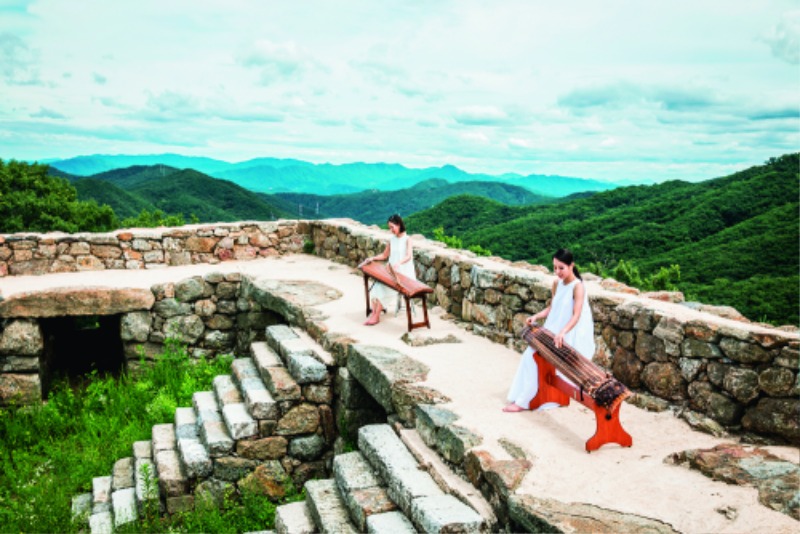
“TAL” (2020) by Dal:um
“Puri for Saenghwang” (2020) by Kim Hyo-yeong and Yeon Jeong-heum
Played on the saenghwang, a free-reed mouth organ with vertical bamboo pipes, and accompanied by the piano, this piece features several rhythm patterns used in shaman rituals, or gut. Shaman ritual music has an improvisational nature, the mood and pace changing depending on the situation at the ritual site. “Puri for Saenghwang” is also performed with a sense of improvisation on top of the basic consensus between the saenghwang and the piano.
On the saenghwang, sound is produced through both inhalation and exhalation as air passes through the bamboo tube inside. Kim Hyo-yeong, one of Korea’s most outstanding saenghwang players, delivers a fast-paced performance that seems to echo the rapidly changing landscape of a modern city and is perfectly in accord with the changes in Songdo International City, where this video was filmed. Adjacent to Incheon International Airport, Songdo has grown into a lively urban center with global companies, international organizations, and universities establishing a presence there. Of the city’s many distinctive buildings, the Tri-Bowl, a building that looks like a spaceship, appears in the video.
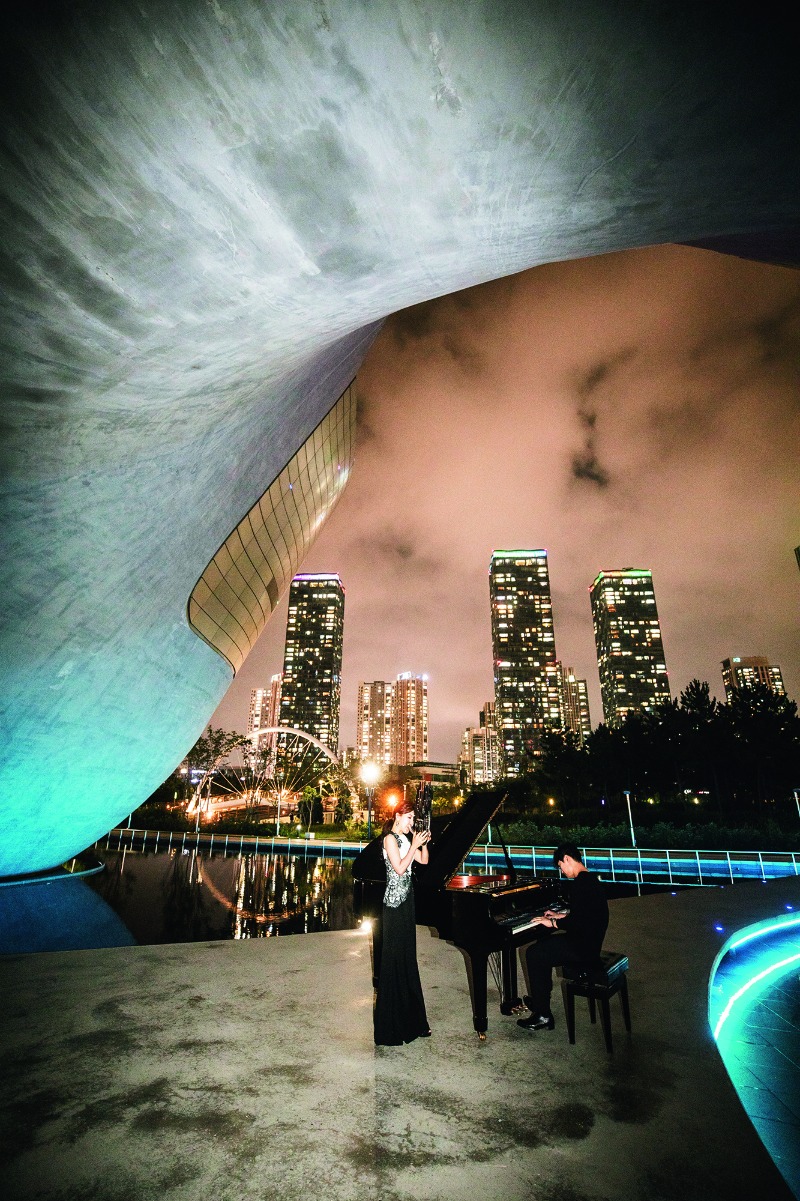
“Puri for Saenghwang” (2020) by Kim Hyo-yeong and Yeon Jeong-heum
“WALZA tightrope walk” (2020) by AJAE
Inscribed in 2011 on UNESCO’s Representative List of the Intangible Cultural Heritage of Humanity, Korean tightrope walking, or jultagi, is a performing art featuring a ropewalker executing a variety of acrobatic feats while singing and dancing on a rope, and an earthbound clown who jokes with him and engages him in witty dialogue. They are joined by a team of musicians who accompany the show on string and wind instruments.
In the past, tightrope walking was the specialty of troupes who traveled around the country, bringing fun and joy to people. AJAE is a group that creatively expands on the traditional jultagi performance. Their video contains a message of hope for the end of COVID-19. It was filmed at Jukjusanseong, a fortress in Anseong, Gyeonggi Province, presumably built in the mid-6th century during the Three Kingdoms period (57 BCE to 668 CE) and later repaired during the Goryeo Dynasty (918-1392).
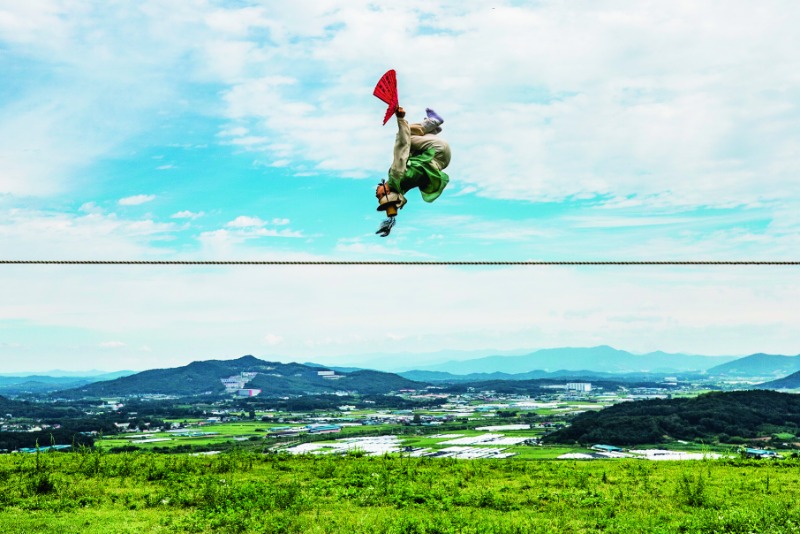
“WALZA tightrope walk” (2020) by AJAE
“New Ritual” (2021) by SaaWee
SaaWee is a duo formed in 2018 by percussionist Kim Ji-hye and jazz violinist Chay Bo-rahm (a.k.a. Sita Chay). An ensemble of the janggu (double-headed drum) and the violin, they conduct musical experiments to comfort and heal the suffering of people today. The two performers compose all their own works, taking inspiration from shaman rites and traditional dance, each piece punctuated by musical narratives on different social issues.
“New Ritual” expresses the dance of souls who have left the city for nature. The video shows a wonderful performance featuring two instruments with completely different timbre and temperament, crossing between formality and improvisation. It was shot in two places: at the Ganghwa Cathedral of the Anglican Church of Korea, a unique church built in 1900 in the style of a hanok, a traditional tiled-roof house, and at Ganghwa Chojijin, a fortress built in the mid-17th century to fend off enemies from the sea. Both sites are located on Ganghwa Island, off Korea’s west coast.
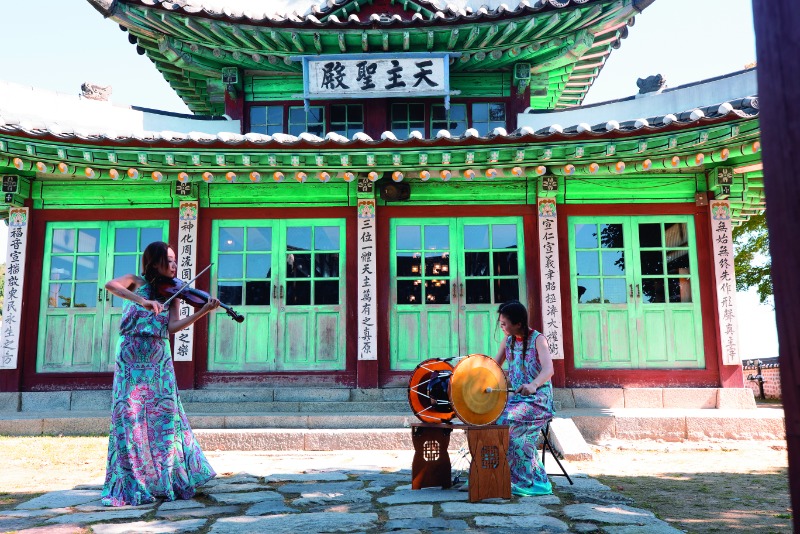
“New Ritual” (2021) by SaaWee
“The Indangsoo Sea” (2021) by Jeonju Pansori Chorus
Pansori is a genre of traditional vocal music that tells a story through music. It is performed by a duo, a singer and a drummer, who accompanies the song. Jeonju, North Jeolla Province, has been a popular pansori center since old times, and even today it continues to produce many of Korea’s most renowned pansori artists. Founded in 2006, the Jeonju Pansori Chorus pioneered the genre of “choral pansori.”
“The Indangsoo Sea” is a newly composed piece based on a passage from Simcheongga (“The Song of Sim Cheong”), one of the major surviving pansori works. The heroine, Sim Cheong, sacrifices herself to the sea god so that her blind father may gain his sight back. The locations for the music video are Chaeseokgang and Sol Island in Buan, North Jeolla Province. Chaeseokgang is a cliff created by years of wave erosion, and Sol Island has a unique sedimentary structure created by volcanic activity.
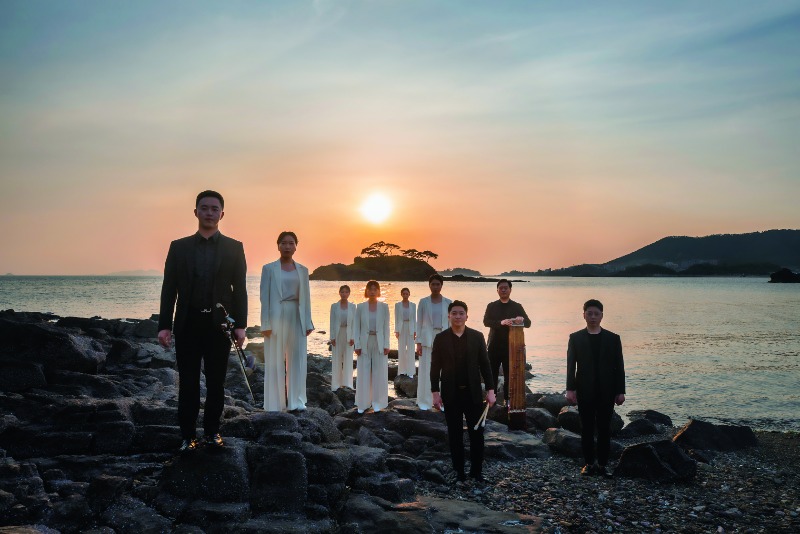
“The Indangsoo Sea” (2021) by Jeonju Pansori Chorus
“A Spring Dream” (2022) by Kim Nari
Jeongga refers to traditional Korean poetic songs once enjoyed by the nobility. Gagok and gasa are types of jeongga, and each syllable in these songs is elongated and sung slowly to instrumental accompaniment. Today, jeongga has been designated and preserved as national intangible cultural heritage.
Kim Nari is a singer dedicated to preserving and transmitting jeongga in its original form, but she also produces creative, modern versions for popular appeal. “A Spring Dream” is one of these newly created jeongga, expressing the emotions felt when looking out the window at beautiful scenery on a warm spring day. The repetitive, dreamy gayageum melody combined with the sounds of the daegeum (transverse bamboo flute) and Kim’s singing is relaxing and comforting. The music video was filmed at Seongyojang, the house of a Joseon Dynasty nobleman located in Gangneung, Gangwon Province. Built in the early 18th century, this house has been well preserved in its original form for over 300 years, earning the impressive complex its designation as national folklore cultural heritage.
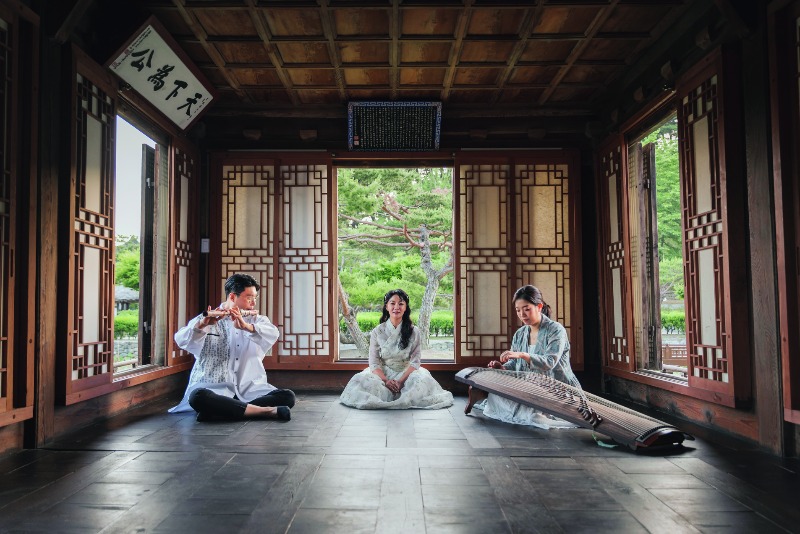
“A Spring Dream” (2022) by Kim Nari
Song Hyun-min Editor-in-chief of Auditorium, Music Critic